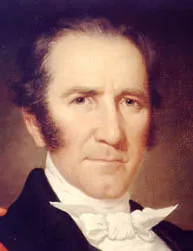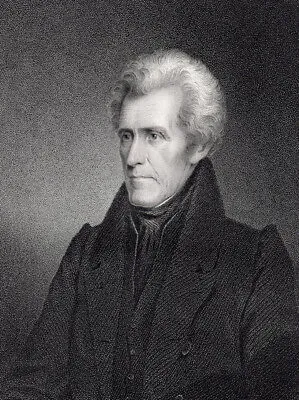
Sam Houston Part III – Early Political Career
In our last installment, Sam Houston Part II – Life with the Cherokee, we explored the complex role Sam Houston played in the lives of the Cherokee people he had long identified with, both as an adopted member of the Cherokee Nation, and as an agent of the United States government who, led by the actions of his long-time friend and mentor Andrew Jackson, had displaced the Cherokee and set in motion what became known as the “Trail of Tears”.
After the 1820 Census, Tennessee gained 3 new seats in Congress. Bolstered by his increasing popularity and the support of several key political allies, Sam Houston won an uncontested election to the U.S. House of Representatives in 1823 representing the 9th Congressional District. He also won a second bid to Congress in 1825.
Like his political mentors, Houston was a member of the Democratic-Republican Party, which dominated state and national politics in the decade following the War of 1812. Houston strongly supported Andrew Jackson’s candidacy in the 1824 Presidential election, which saw four major candidates from the same political party in the race. Since no candidate won a majority of the vote, the House of Representatives held a special election which was won by John Quincy Adams. This led to a split in the party, with supporters of Jackson forming the Democratic Party and those of Adams forming the Republican National Party.
With Jackson’s backing, Houston won election as the sixth governor of Tennessee in 1827 at the age of 34. Governor Houston advocated for internal improvements such as canals and roads, and supported lowering the price of land for homesteaders living on lands that were part of the public domain. He also aided Jackson’s successful campaign in the Presidential election of 1828.

In 1829 Houston’s friend and political mentor was in the White House, and Houston himself seemed well positioned for a future Presidential run of his own. In January of that same year, he married Eliza Allen, the daughter of wealthy Gallatin, TN plantation owner John Allen. Although details are rather scarce, the relationship between Houston and his new bride deteriorated quickly, and after only 11 weeks she returned to her father’s plantation. This scandalous turn of events irreparably damaged Houston’s reputation, and as a result he resigned the governorship in April of 1829 and sought refuge with the Cherokee and to the home of his foster father Oolooteka, aka John Jolly, a leader of the Cherokee in Arkansas.
Because of Houston’s experience in government and his connections with President Jackson, he was asked by the leaders of several local Native American tribes to mediate disputes and communicate their needs to the Jackson administration. In late 1829 the Cherokee accorded Houston official tribal membership and dispatched him to Washington to negotiate several issues on their behalf.
If you missed our last blog in the series, Sam Houston Part II – Life with the Cherokee, here’s the link: Sam Houston Part II – Life with the Cherokee (familytreenuts.org)
When we pick up our next installment of Sam Houston; Pioneer, Patriot, Statesman, President – Part IV, we will explore Houston’s journey from political exile to Senator and President. Please join us for the next exciting chapter in the life of the fascinating and complex Sam Houston.
Blaine K. Price, Historian – Family Tree Nuts
